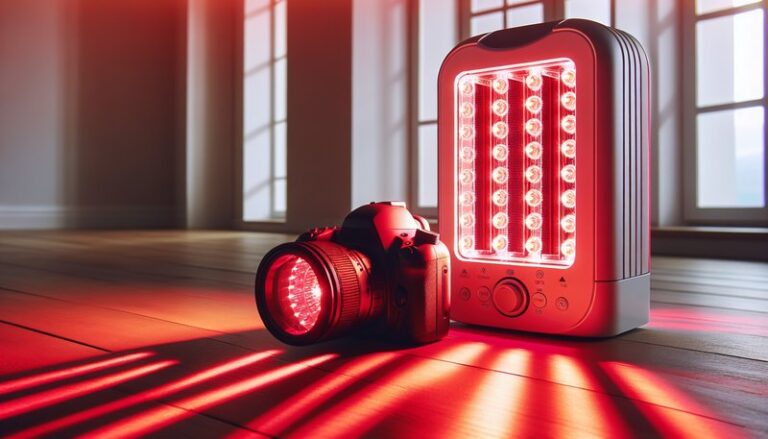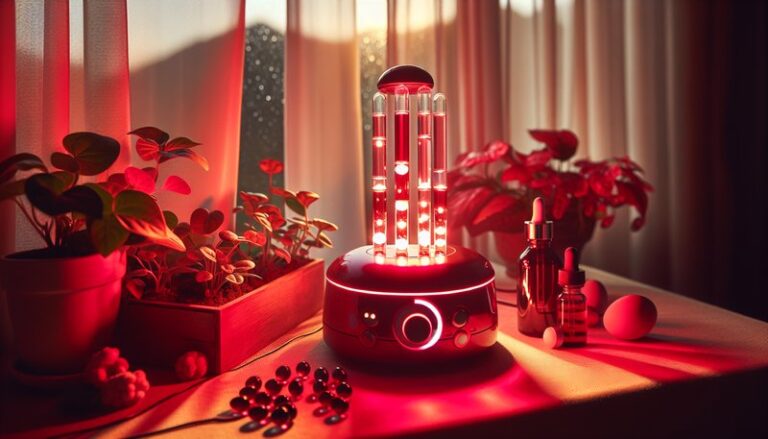What Time Of Day Is Best For Red Light Therapy?
Have you ever wondered when the optimal time for red light therapy is?
This article explores the best times to incorporate red light therapy into your routine, considering various factors like lifestyle, goals, and scientific research. By the end of our discussion, you’ll have a clearer understanding of when to reap the most benefits from this innovative treatment.
Key Takeaways
- Morning sessions can enhance energy levels and focus throughout the day.
- Evening sessions may promote relaxation and better sleep quality.
- Consistency in timing can optimize outcomes and enhance the therapeutic experience.
What is Red Light Therapy?
Red light therapy (RLT) involves exposing the skin to low levels of red and near-infrared light. This non-invasive treatment has gained popularity due to its potential benefits such as improved skin health, pain relief, and faster recovery from injuries. The underlying mechanism of RLT stimulates cellular functions, boosting mitochondrial activity and promoting the healing process.
RLT can be administered using various devices, including handheld units, light panels, and full-body beds. The flexibility of RLT allows for easy integration into different lifestyles, whether at home, in a clinic, or at a wellness center.
What are the Benefits of Red Light Therapy?
Understanding the timing of RLT can amplify its advantages. Let’s explore how timing affects the benefits.
Enhanced Mood and Energy Levels
Morning sessions of RLT can significantly boost serotonin levels, which may enhance mood and focus for the rest of the day. Users often find that starting the day with RLT energizes them, making it easier to tackle daily tasks.
Improved Sleep Quality
In contrast, evening sessions of RLT can facilitate relaxation. The calming effects help reduce cortisol levels, paving the way for better sleep. Users have reported falling asleep more quickly and experiencing deeper sleep phases.
Accelerated Recovery and Pain Relief
Regardless of timing, RLT is known for its pain-relieving properties. Regular usage post-exercise or after a physical therapy session can expedite recovery, which is beneficial for athletic training or injury rehabilitation.
Skin Health Benefits
Using RLT consistently, whether in the morning or evening, can improve skin texture and promote collagen production. Incorporating RLT into your skincare routine can lead to visible improvements over time.
Is it Possible to Optimize Red Light Therapy by Timing?
Yes, timing can significantly impact the effectiveness of RLT. However, it is essential to align your therapy with your specific health goals and daily routines.
Check our latest on Does Red Light Therapy Tan Skin?
What are the Advantages of Timing RLT?
Timing RLT offers various advantages, such as enhancing its overall effectiveness.
Aligning with Circadian Rhythms
By scheduling RLT to coincide with natural light patterns, users can support their circadian rhythms, potentially improving energy levels during the day and sleep quality at night.
Maximizing Frequency and Consistency
Choosing a consistent time for RLT, whether daily or several times a week, helps improve adherence to the therapy, leading to more pronounced results over time.
Tailoring to Individual Needs
Different individuals have unique needs; some may find morning sessions invigorating, while others prefer the rejuvenation of evening sessions. Personalizing treatment times helps maximize benefits.
What are the Things to Consider Before Timing RLT?
Before determining the right time for RLT, consider several crucial factors:
Personal Schedule
Assess your daily schedule and identify a time that allows for uninterrupted therapy. Regularity in your sessions plays an essential role in the therapy’s effectiveness.
Specific Health Goals
Consider what you aim to achieve with RLT. Whether it’s pain management, improving skin health, or enhancing mood, aligning your sessions with your health goals is crucial.
Light Exposure and Vitamin D
Be mindful of the amount of natural light you receive throughout the day. Morning RLT sessions could complement your body’s natural exposure to sunlight, supporting mood and energy levels effectively.
What are the Alternatives to Red Light Therapy?
If RLT doesn’t fit your lifestyle or needs, there are alternative therapies to consider:
Infrared Saunas
Infrared saunas utilize similar wavelengths of light to promote healing and relaxation. These are ideal for those seeking detoxification and improved circulation.
Cold Therapy
Cold therapy, including ice baths and cryotherapy, can effectively reduce inflammation and enhance recovery. This is especially popular in athletic communities.
Traditional Light Therapy
For those primarily interested in mood enhancement or sleep support, traditional light therapy (bright light exposure in the morning or evening) can effectively combat seasonal affective disorder (SAD) and circadian rhythm disorders.
Conclusion: Is it Recommended to Time Your Red Light Therapy?
Incorporating a specific time for red light therapy can enhance its benefits, whether you choose to do morning or evening sessions. Finding the right time ultimately depends on your personal goals and lifestyle. The key to maximizing the therapy lies in consistency and alignment with your body’s natural rhythms.
Get insights from Can Red Light Therapy Aid Fertility?
Frequently Asked Questions
What is the best time of day for red light therapy?
The ideal time varies among individuals. Morning sessions can boost energy and mood, while evening sessions may promote relaxation and improved sleep.
Can I do red light therapy multiple times a day?
Yes, as long as you maintain a safe distance and limit the duration of each session. However, it’s essential to listen to your body and adjust as needed.
Is red light therapy safe at any time of day?
Yes, red light therapy is generally safe, but individual responses may vary. It’s advisable to monitor how your body reacts to different times and adjust accordingly.
How long should each red light therapy session last?
Most sessions range from 10 to 30 minutes, depending on your goals and the specific device used. Always follow the manufacturer’s guidelines for best results.






